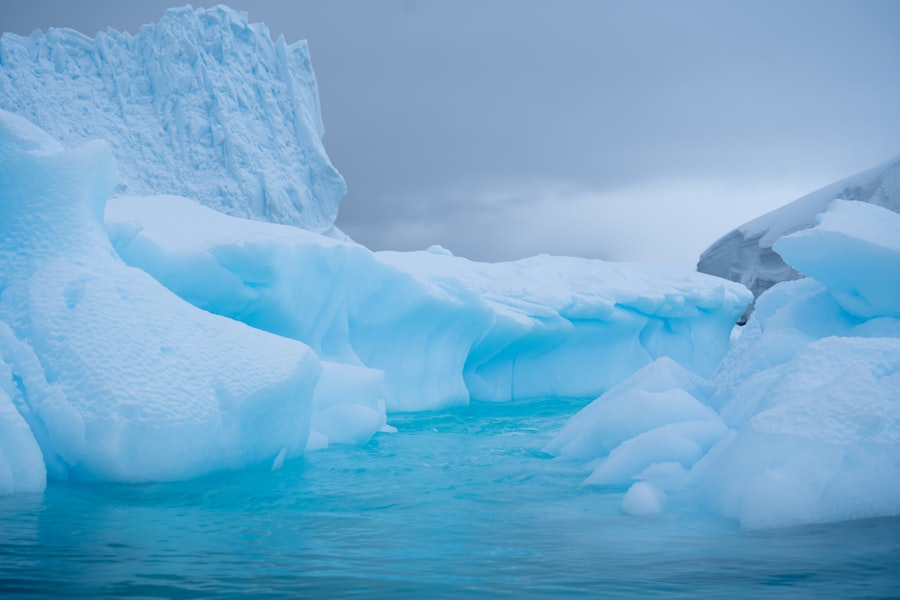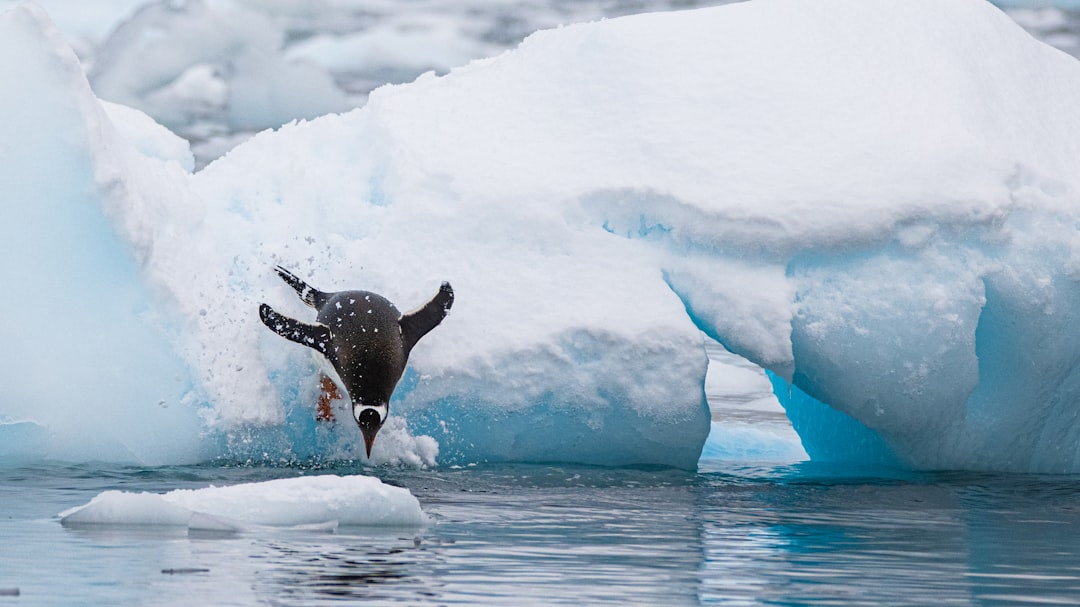The Drake Passage, a body of water that separates South America from Antarctica, is renowned for its tumultuous seas and unpredictable weather. Stretching approximately 800 kilometers (500 miles) between Cape Horn and the Antarctic Peninsula, it serves as a critical maritime route for vessels venturing to the southernmost continent. The passage is not only significant for its geographical location but also for its ecological importance, as it connects the Atlantic and Pacific Oceans, facilitating the movement of marine life and influencing global ocean currents.
Navigating the Drake Passage is often considered a rite of passage for adventurers and researchers alike. The waters are known for their rough conditions, with waves that can reach heights of over 30 feet during storms. This unpredictability has earned the passage a reputation as one of the most challenging maritime routes in the world.
Despite its daunting nature, the Drake Passage is a gateway to some of the most pristine and untouched environments on Earth, making it a coveted destination for those seeking to explore the wonders of Antarctica.
Key Takeaways
- The Drake Passage is a body of water between South America’s Cape Horn and the South Shetland Islands of Antarctica, known for its rough seas and challenging conditions.
- Weather and climate in the Drake Passage can be unpredictable, with strong winds, high waves, and rapidly changing conditions, making it important to be prepared for all types of weather.
- Navigational considerations in the Drake Passage include the presence of icebergs, strong currents, and the need for experienced crew and advanced technology for safe passage.
- Safety precautions such as wearing appropriate clothing, securing personal belongings, and following crew instructions are essential for a smooth and safe journey through the Drake Passage.
- Choosing the right vessel for the Drake Passage expedition involves considering factors such as size, stability, and amenities to ensure a comfortable and enjoyable experience.
Weather and Climate Challenges
The weather in the Drake Passage is notoriously volatile, characterized by rapid changes that can occur within minutes. Sailors and travelers must be prepared for a range of conditions, from calm seas to fierce storms. The passage is influenced by the confluence of warm and cold ocean currents, which can create fog, rain, and strong winds.
These elements combine to form a unique microclimate that can challenge even the most seasoned mariners. Understanding the climate patterns of the Drake Passage is essential for anyone planning a journey through these waters. The summer months, from November to March, generally offer milder conditions, but even then, travelers should be ready for sudden shifts in weather.
The unpredictability of the climate necessitates careful planning and flexibility in itineraries, as conditions can change rapidly and impact travel schedules. Those who venture into this region must remain vigilant and adaptable to ensure a safe and enjoyable experience.
Navigational Considerations

Navigating the Drake Passage requires a keen understanding of maritime navigation principles and an awareness of the unique challenges posed by this body of water. The passage is home to numerous hazards, including submerged rocks, shifting icebergs, and strong currents that can affect vessel stability. Mariners must rely on accurate charts and modern navigational technology to safely traverse these treacherous waters.
In addition to traditional navigation methods, many vessels now employ advanced systems such as GPS and radar to enhance safety and efficiency. However, even with modern technology, experienced crew members play a crucial role in ensuring safe passage through the Drake. Their knowledge of local conditions and ability to interpret weather patterns can make all the difference in successfully navigating this formidable stretch of ocean.
Safety Precautions
| Safety Precautions | Number of Incidents | Number of Employees Trained |
|---|---|---|
| Wearing PPE | 10 | 50 |
| Regular Safety Inspections | 5 | 30 |
| Emergency Response Drills | 3 | 25 |
Safety is paramount when traversing the Drake Passage, given its reputation for unpredictable weather and challenging sea conditions. Travelers should prioritize safety measures before embarking on their journey. This includes ensuring that all safety equipment is in good working order, such as life jackets, flares, and emergency beacons.
Additionally, crew members should conduct thorough safety briefings to familiarize passengers with emergency procedures. It is also advisable for travelers to stay informed about weather forecasts and sea conditions throughout their journey. Many vessels equipped with satellite communication systems can provide real-time updates on changing weather patterns.
By remaining vigilant and prepared for emergencies, travelers can significantly reduce risks associated with navigating the Drake Passage.
Choosing the Right Vessel
Selecting the appropriate vessel for a journey through the Drake Passage is crucial for ensuring safety and comfort. Various types of ships are available, ranging from sturdy icebreakers designed to handle extreme conditions to smaller expedition vessels that offer a more intimate experience. Each type of vessel has its advantages and disadvantages, depending on the traveler’s preferences and objectives.
For those seeking adventure and exploration, an icebreaker may be the ideal choice due to its robust construction and ability to navigate through ice-laden waters. On the other hand, smaller expedition vessels often provide a more personalized experience with opportunities for wildlife viewing and shore excursions. Ultimately, travelers should consider their comfort level with rough seas, desired amenities, and specific interests when selecting a vessel for their journey through the Drake Passage.
Packing and Preparation

Proper packing and preparation are essential components of any successful expedition through the Drake Passage. Given the unpredictable weather conditions, travelers should pack layers of clothing that can be easily added or removed as temperatures fluctuate. Waterproof outer layers are particularly important to protect against rain and spray from waves.
In addition to clothing, travelers should consider bringing essential gear such as binoculars for wildlife spotting, cameras for capturing stunning landscapes, and personal items like medications or comfort items that may be needed during the journey. It is also wise to pack snacks and hydration supplies, as access to provisions may be limited during certain stretches of the passage. By preparing adequately, travelers can enhance their overall experience while navigating this remarkable yet challenging waterway.
Wildlife Spotting Opportunities
The Drake Passage is not only a challenging maritime route but also a vibrant ecosystem teeming with wildlife. Adventurers traversing these waters have the opportunity to encounter an array of marine life, including whales, seals, and various seabird species. The nutrient-rich waters attract an abundance of krill, which in turn supports larger predators like humpback whales and orcas.
These magnificent birds are known for their impressive wingspans and ability to glide effortlessly over long distances. Travelers should keep their cameras ready as they navigate through this biodiverse region, as wildlife sightings can occur unexpectedly and provide unforgettable moments during their journey.
Health and Wellness Tips
Maintaining health and wellness during a voyage through the Drake Passage is vital for ensuring an enjoyable experience. The combination of rough seas and potential seasickness can take a toll on even the most seasoned travelers. To mitigate these effects, individuals should consider taking preventive measures such as using seasickness medication or acupressure bands before setting sail.
Staying hydrated is equally important while navigating these waters. The dry air on board can lead to dehydration, so travelers should make a conscious effort to drink plenty of water throughout their journey. Additionally, consuming nutritious meals can help maintain energy levels during long days at sea.
Engaging in light exercise or stretching can also alleviate discomfort caused by prolonged periods of sitting or standing on deck.
Cultural and Historical Significance
The Drake Passage holds significant cultural and historical importance beyond its geographical features. It has been a site of exploration since early European navigators sought new trade routes in the 16th century. The passage was named after Sir Francis Drake, an English sea captain who became one of the first Europeans to navigate these waters during his circumnavigation of the globe.
In addition to its historical significance, the region is rich in indigenous culture. The nearby islands are home to communities that have thrived in harmony with their environment for centuries. Understanding this cultural context adds depth to any expedition through the Drake Passage, allowing travelers to appreciate not only the natural beauty but also the human stories intertwined with this remarkable landscape.
Expedition Leader Insights
Expedition leaders play a pivotal role in enhancing the experience of travelers navigating the Drake Passage. Their expertise in marine biology, geology, and history provides valuable insights into the unique features of this region. These leaders often share fascinating stories about past explorers who braved these waters and offer guidance on wildlife spotting opportunities along the way.
Moreover, expedition leaders are adept at adapting itineraries based on weather conditions and passenger interests. Their ability to read changing circumstances ensures that travelers make the most of their journey while prioritizing safety. Engaging with an experienced expedition leader can transform a standard voyage into an enriching adventure filled with learning opportunities.
Tips for a Smooth Passage
To ensure a smooth passage through the Drake Passage, travelers should keep several key tips in mind. First and foremost, flexibility is essential; weather conditions can change rapidly, necessitating adjustments to planned activities or routes. Being open to changes can lead to unexpected discoveries and memorable experiences.
Additionally, maintaining a positive attitude can greatly enhance one’s journey through challenging waters. Embracing the adventure spirit allows travelers to appreciate both the beauty and unpredictability of this remarkable passage. Finally, staying connected with fellow passengers fosters camaraderie during long stretches at sea; sharing stories and experiences can create lasting bonds among those navigating this extraordinary route together.
In conclusion, traversing the Drake Passage is an adventure filled with challenges and rewards alike. From understanding its geographical significance to preparing adequately for unpredictable weather conditions, every aspect contributes to an unforgettable experience.
Drake Passage, the notorious stretch of water between the southern tip of South America and Antarctica, is a formidable challenge for even the most seasoned sailors. Its unpredictable weather and turbulent seas have made it a rite of passage for adventurers heading to the icy continent. For those interested in learning more about the geographical and historical significance of this treacherous route, a related article can be found on MyGeoQuest. This resource provides insights into the unique challenges and experiences faced by those who navigate these waters, offering a deeper understanding of the Drake Passage’s role in Antarctic exploration.
WATCH NOW! Drake Passage: Earth’s Deadliest Waters Revealed
FAQs
What is the Drake Passage?
The Drake Passage is the body of water between the southern tip of South America and the northern tip of the Antarctic Peninsula. It is known for its rough seas and strong winds, making it one of the most challenging maritime routes in the world.
How do you travel to Antarctica via the Drake Passage?
Traveling to Antarctica via the Drake Passage typically involves taking a cruise or expedition ship from Ushuaia, Argentina, or Punta Arenas, Chile. The journey can take around 2-3 days, depending on weather conditions.
What is the weather like in the Drake Passage?
The weather in the Drake Passage is characterized by strong winds, rough seas, and rapidly changing conditions. It is known for its stormy and unpredictable nature, with waves reaching heights of up to 30 feet.
What wildlife can be seen in the Drake Passage?
The Drake Passage is home to a variety of marine wildlife, including whales, dolphins, and seabirds. Passengers on cruises through the passage may have the opportunity to spot species such as albatrosses, petrels, and penguins.
Are there any safety concerns when traveling through the Drake Passage?
Due to its challenging conditions, the Drake Passage can be rough and potentially hazardous for smaller vessels. Passengers are advised to be prepared for seasickness and to follow safety protocols provided by the cruise or expedition ship.
